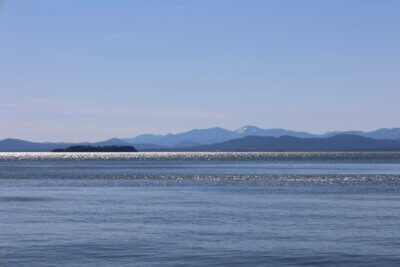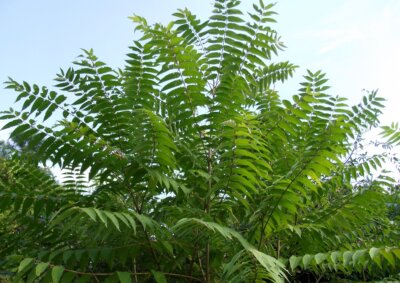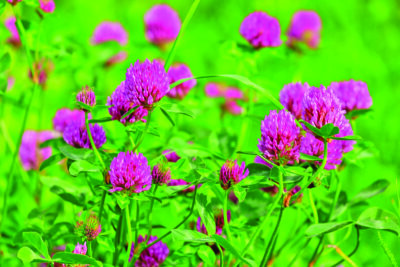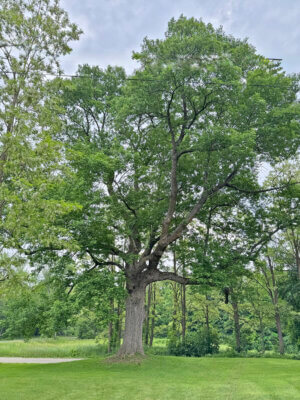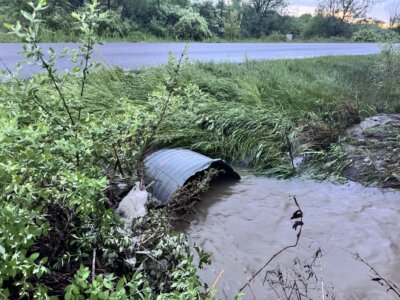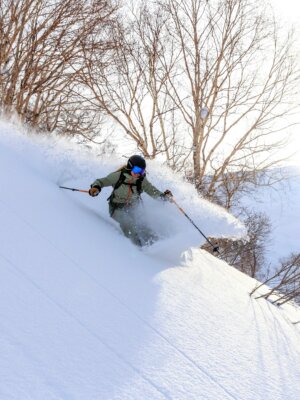Garlic mustard: It’s invasive, so be aggressive
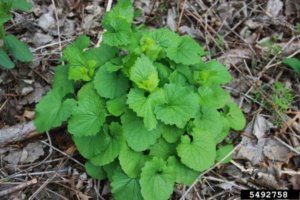
As spring unfolds around us, enjoying a sunny, warm walk outside is a pleasure that can be sullied by few things, save a few pests: bugs, scary dogs, garlic mustard. Though they can be annoying, there’s no need to terminate the first two items on that list, but the third is fair game. The invasive plant, which grows in abundance in Charlotte, is creeping around Thompson’s Point, and a group of Charlotters are attempting to curb its spread and looking for help in doing so.
Susan Smith, who is a member of the Charlotte Invasive Collaborative, said that power in numbers is a good idea for an invasive plant like this. “This year there are many walkers at Thompson’s Point, and the many can do a job that the few could do!” Nan Mason and Belinda Mucklow are two regular walkers who have worked garlic mustard removal into their exercise routine.
Garlic mustard is an invasive that, according to Vermont Invasives (a website operated and funded by various state agencies), arrived in New England around colonial times, and is particularly pesky because of its ability to grow in the shade. “A high shade tolerance allows this plant to invade high quality, mature woodlands, where it can form dense stands. These stands not only shade out native understory flora but also produce allelopathic compounds that inhibit seed germination of other species,” the site reads.
Mucklow, in an email, said that it’s important to be able to recognize the plant (see above photo) and noted that there’s an urgency to get rid of it at this time of year. “This is the perfect time to pull the garlic mustard as there are no seeds or seed pods yet,” she said. “Therefore, they do not need to be bagged when they are pulled – just toss them into road or woods or take them home and make a pesto or put it in your soup!” The plants are known to have a pleasant, mild garlic taste.
Mason and Mucklow pull the weeds on their walks, and have marked them with white and pink flags as they go as a helpful guide to others who might feel inspired to do a couple lunges and pull some weeds as they walk. Group participation is key, Smith said. “In two previous years two people had tackled this job, but were overwhelmed.”
Mucklow concurs. “We are suggesting that if everybody pulls five weeds every time they walk around Thompson’s Point we can get rid of them quickly. In reality, the best thing to do is to find a marked area and just clean up that little area. After a while one gets to know what they look like. Please leave the flags—we will pull them later and also check the area.”
She also said it’s ideal to get the roots up as well as the leaves, though if it’s not possible, even removing most of the plant will prevent it from seeding this year; ambitious weeder/walkers can bring a handheld weeding tool “to help get up roots on more difficult established plants.”
The plant spreads quickly and seeds twice a year, so early and active participation is useful and necessary in its eradication. There are many recipes available online (garlic mustard roulade, anyone?) if weeders want to enjoy the results of their hard work.
Related Stories
Popular Stories
If you enjoy The Charlotte News, please consider making a donation. Your gift will help us produce more stories like this. The majority of our budget comes from charitable contributions. Your gift helps sustain The Charlotte News, keeping it a free service for everyone in town. Thank you.
Andrew Zehner, Board Chair



